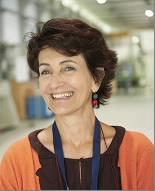

Published on the 6th July 2015 by ANSTO Staff
On 24 July the Director of the Laboratory Léon Brillouin at the French Atomic Commission (CEA) Prof Christiane Alba-Simionesco, will discuss the challenges European neutron scattering groups face, as part of our Distinguished Lecture series.
The large and accomplished European neutron user community has an important role in bringing the various neutron facilities together, to maintain technical competence and training across Europe, as well as in addressing societal expectations and promoting innovation concomitantly with basic curiosity.
Accordingly the questions addressed cover a wide range of scientific areas from basic physics, with particle-physics and cosmology geology, materials sciences, life sciences, as well as energy and environmental issues.
 |
| Prof Christiane Alba-Simionesco |
Prof Christiane Alba-Simionesco will explore the challenges European scientists may face in the next two decades and preparations for the delivery of the most intense neutron source in the world, the European Spallation Source, the ESS, in Lund, Sweden.
Lecture details:
- Date: 24 July
- Time: 11am, morning tea at 10:30am
- Where: AINSE Theatre, New Illawarra Road, Lucas Heights
- Cost: Free
About the speaker
Prof Alba-Simionesco works at the National Center for Scientific Research and is the Director of the Laboratory Léon Brillouin at CEA Saclay. Before this position, she was the Deputy Director of the Physical Chemistry Laboratory at the Paris-Sud University.
Throughout the years, she has served on many boards of directors and international review committees in research and research infrastructures and on various panels for peer review of beam time proposals and advisory committees of various neutron scattering facilities. In 2014, Christiane was elected as chair of the European Neutron Scattering Association.
Prof Alba-Simionesco background is in chemical physics and thermodynamics and she obtained her PhD at the Pierre et Marie Curie University in 1984. Her research topics focused on thermodynamics, structure and dynamics of condensed phases.